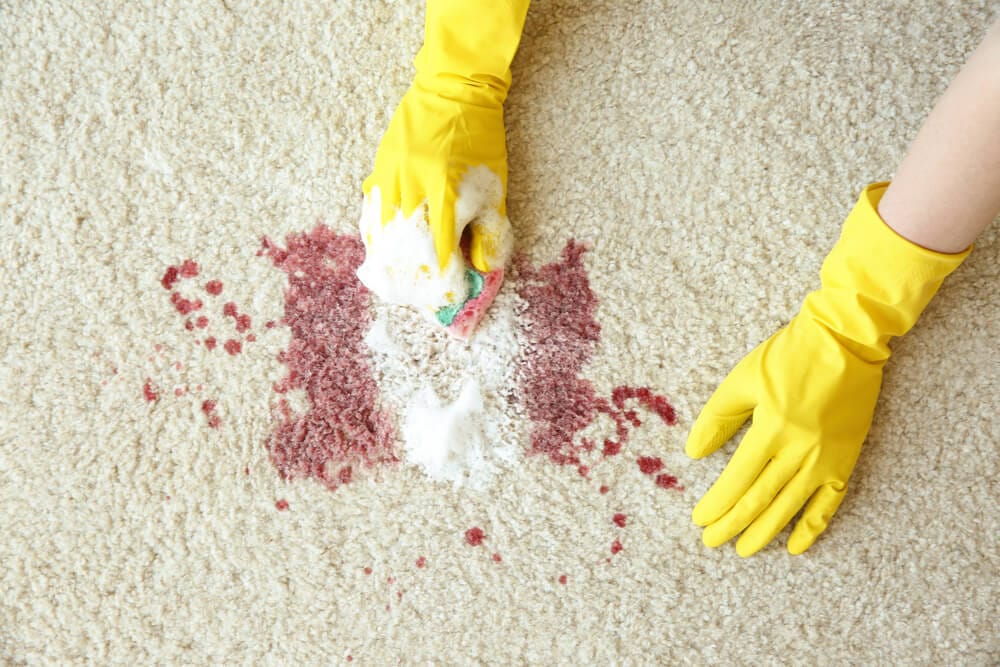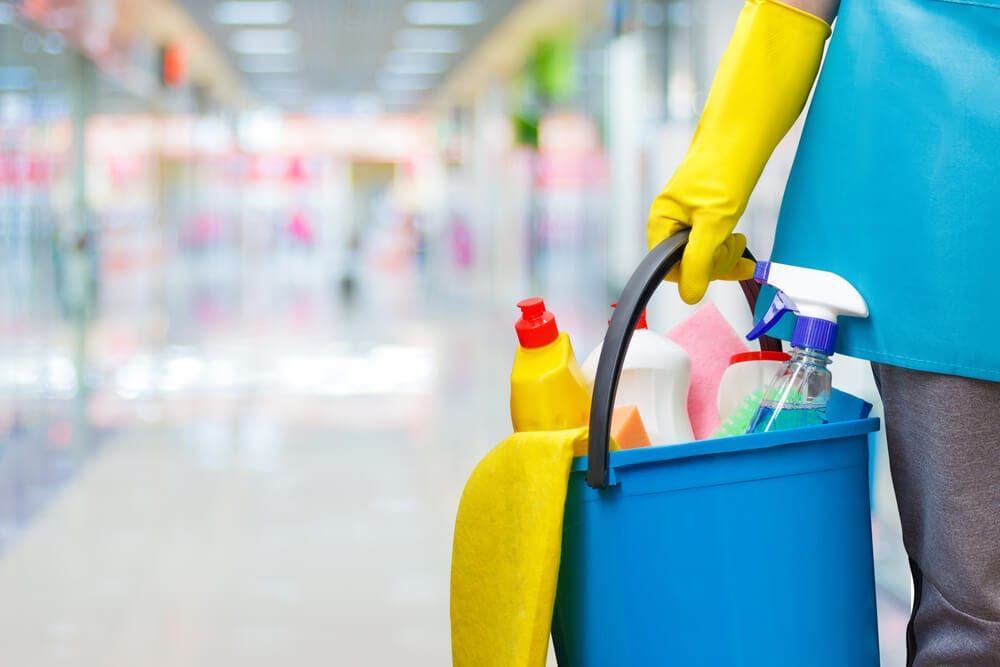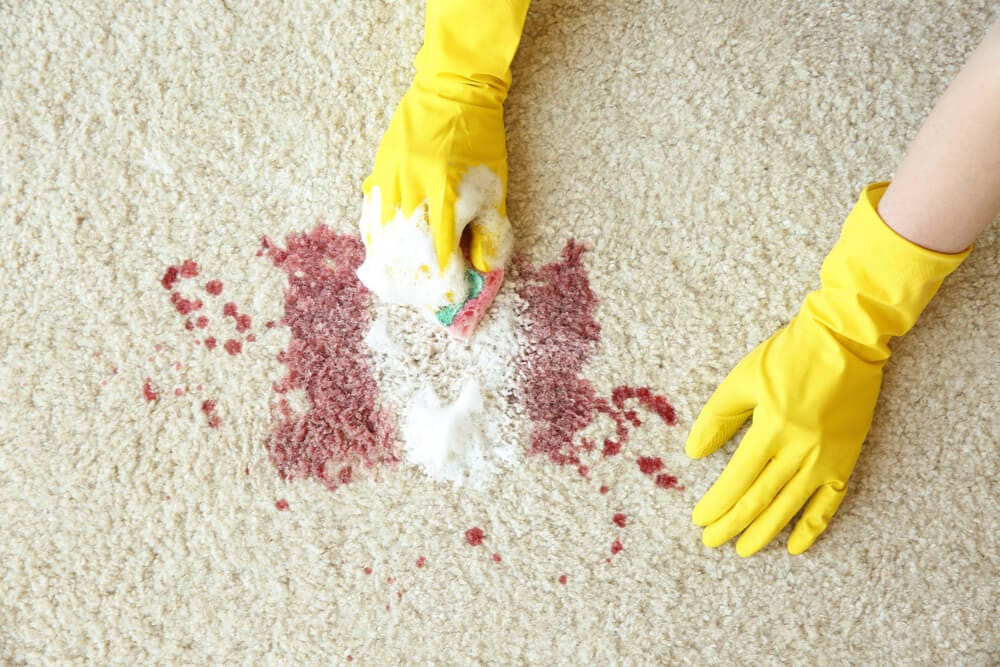Whatever we do in life and wherever we decide to go, one thing is certain , accidents will happen. While its smart to stay as far away from accidents as possible, its simply something that is bound to happen sooner or later. Now, instead of anticipating and waiting for the inevitable, one should at least learn how to deal with unforeseen scenarios once they happen.
Blood is one of the most hazardous substances to clean up and thus should not be taken lightly. Rather than just wiping it off or cleaning it with nothing more but a damp cloth, you should take blood spills seriously and act accordingly. If youre not too sure how to clean up blood spills, take a moment to check out our 10-step blood spill cleanup procedure.

10-Step Procedure For Blood Spill Cleanup
Before we venture into this list, its important to point out that each situation will be different. Human blood is a biohazard because it can expose you to a number of pathogens such as HIV, MRSA, Hepatitis B and C, and a plethora of others. Therefore, it is essential to be as thorough and precise as possible with bloodborne pathogen cleanup.
With that being said, here are ten steps you ought to follow in order to clean up blood from a hard surface:
The Cleaning Equipment
Before you even start thinking about cleaning, its important to think about protection. This means you should always use gloves and eye protection. Even if you think they arent necessary, rest assured they are. It takes only a minute or two, but it can save your life.
Eliminate Potential Dangers
It doesnt matter whether youre dealing with sharp glass or any other potential hazard, be sure to clean everything around the spillage before you decide to treat it. Remember to NEVER remove pieces of broken glass or other sharp objects by hand; use a brush and dustpan.
First Round of Cleaning
The first order of business is to cover the spill with towels and wait for them to soak up as much blood as possible. Feel free to put some weight on the towels in order to somewhat speed up the process. Dont use your hands to pressure the towels , use a heavy object instead.
Second Round of Cleaning
Now that the towels have soaked up the majority of the spill, its time to use a disinfectant. Apply the solution on the spill and let it sit for at least 10 minutes. You could leave it to sit for longer; it all comes down to the size and nature of the spill. Once ten minutes have elapsed, start scrubbing the area from the outside toward the center with a towel. Dispose of the towels by putting them in a biohazard bag after youre finished scrubbing.
Third Round of Cleaning
This is the final step as far as treating blood goes. After youre done with the previous step, let the spill sit for about 10-15 minutes and then treat it again with damp towels. This should get rid of any residue left as well as eliminate any leftover disinfectant solution. Once again, dispose of the towels by putting them into a biohazard bag.
Dispose of Your Equipment
Once youre done scrubbing and cleaning, be sure to dispose of your protective equipment carefully. Put your tools and clothing into a plastic bag and label it biohazard. On top of that, make sure no other areas were contaminated during this process.

Decontamination of the Area
Even if youre absolutely sure that nothing has been contaminated during the procedure, its important to decontaminate the area just to make sure. Also, you should always decontaminate reusable equipment such as dustpans, buckets, brooms, etc. Use a quality disinfectant and let the equipment soak for at least 10 minutes. Subsequently, wash and rinse the equipment with fresh water.
Mandatory Procedure Checks
Once youre finished with the procedure, double-check your clothes, skin, and furniture around you for any contamination. If you happen to notice any blood, especially on your body, wash it off with the disinfectant and take a shower after that. Its strongly recommended that you have a friend or a neighbor by your side for this particular step, just so they can lend you a hand and help you identify contaminated spots if there are any left.
Wash Your Hands Thoroughly
Taking a shower after following this blood spillage procedure is definitely not sufficient. Instead, you should wash your hands with disinfectant soap and warm water. On top of that, using wet wipes after a thorough cleanup is a great secondary measure.
Dispose of the Toxic Waste Properly
Now that youre done with the scrubbing and have cleaned yourself, its time to get rid of the contaminated waste. DO NOT wash the towels nor the equipment and attempt to decontaminate it, the best course of action is to get rid of it by placing it into labeled bags (biohazard).
Think About Hiring a Team of Experts
If youre looking for a simple and easy answer to the question of how to clean up blood, dont hesitate to try our 10-step procedure as it will, in most cases, work flawlessly. In case youre dealing with contamination of a more serious magnitude, think about hiring a team of experts instead of dealing with it yourself. At Spaulding Decon, we can help you with your cleaning process. Our team members will be happy to assist you.
If you would like to know more about cleaning, toxic waste, and similar subjects, read our other articles!





